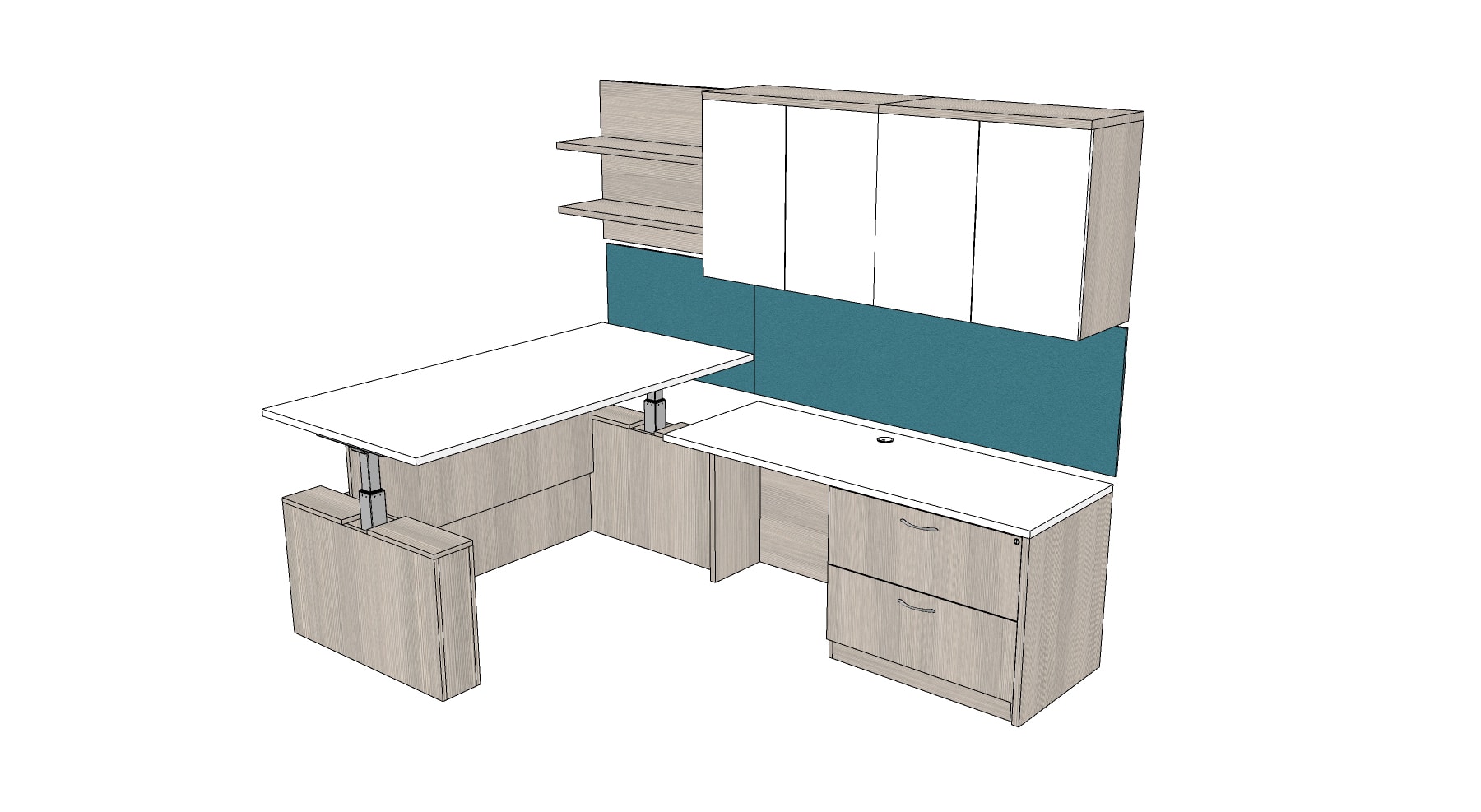Sit-stand desks have become increasingly popular in modern office environments, offering a range of benefits that go beyond the traditional seated work setup. These versatile desks, adjustable to both sitting and standing positions, promote employee well-being and productivity in numerous ways.
1. **Improved Posture and Reduced Health Issues:**
Sit-stand desks encourage users to vary their positions throughout the day, reducing the strain on the spine and minimizing the risk of developing musculoskeletal issues. Employees can easily switch between sitting and standing, promoting better posture and mitigating the negative effects of prolonged sitting.
2. **Increased Energy and Productivity:**
Alternating between sitting and standing helps combat the mid-afternoon energy slump, keeping employees more alert and focused. The ability to adjust desk height allows individuals to find their optimal working position, contributing to increased productivity and concentration.
3. **Enhanced Circulation and Heart Health:**
Sitting for extended periods can lead to poor circulation and negatively impact heart health. Sit-stand desks facilitate movement, helping to improve blood flow and reduce the risk of cardiovascular problems. This active approach to work contributes to a healthier lifestyle overall.
4. **Weight Management and Caloric Expenditure:**
Standing burns more calories than sitting, albeit modestly. Over time, these small differences can contribute to weight management and metabolic health. While not a replacement for regular exercise, incorporating standing into the workday aligns with a more active lifestyle.
5. **Adaptability to Individual Preferences:**
One size does not fit all when it comes to work preferences. Sit-stand desks accommodate individual needs, allowing employees to tailor their workspace to their liking. This adaptability promotes a sense of autonomy and comfort, contributing to overall job satisfaction.
6. **Reduced Sedentary Behavior:**
Sedentary behavior is a significant concern in the modern office environment. Sit-stand desks provide a practical solution to break the monotony of sitting, encouraging movement and reducing the negative impact of extended periods of inactivity on health.
7. **Positive Impact on Employee Well-Being:**
Employees who have the option to use sit-stand desks report higher levels of job satisfaction and well-being. These desks demonstrate a commitment to employee health, contributing to a positive workplace culture and potentially aiding in employee retention.
8. **Investment in Long-Term Health:**
While the initial cost of sit-stand desks may be higher than traditional desks, many companies view it as an investment in their employees’ long-term health and well-being. The potential reduction in healthcare costs associated with sedentary-related health issues can outweigh the initial expenses.
In conclusion, sit-stand desks offer a myriad of benefits that extend beyond the physical workspace. By promoting movement, improving posture, and contributing to overall well-being, these desks align with the evolving understanding of the relationship between work environment and employee health. As companies prioritize the holistic wellness of their workforce, sit-stand desks are becoming a cornerstone in the modern office landscape.


